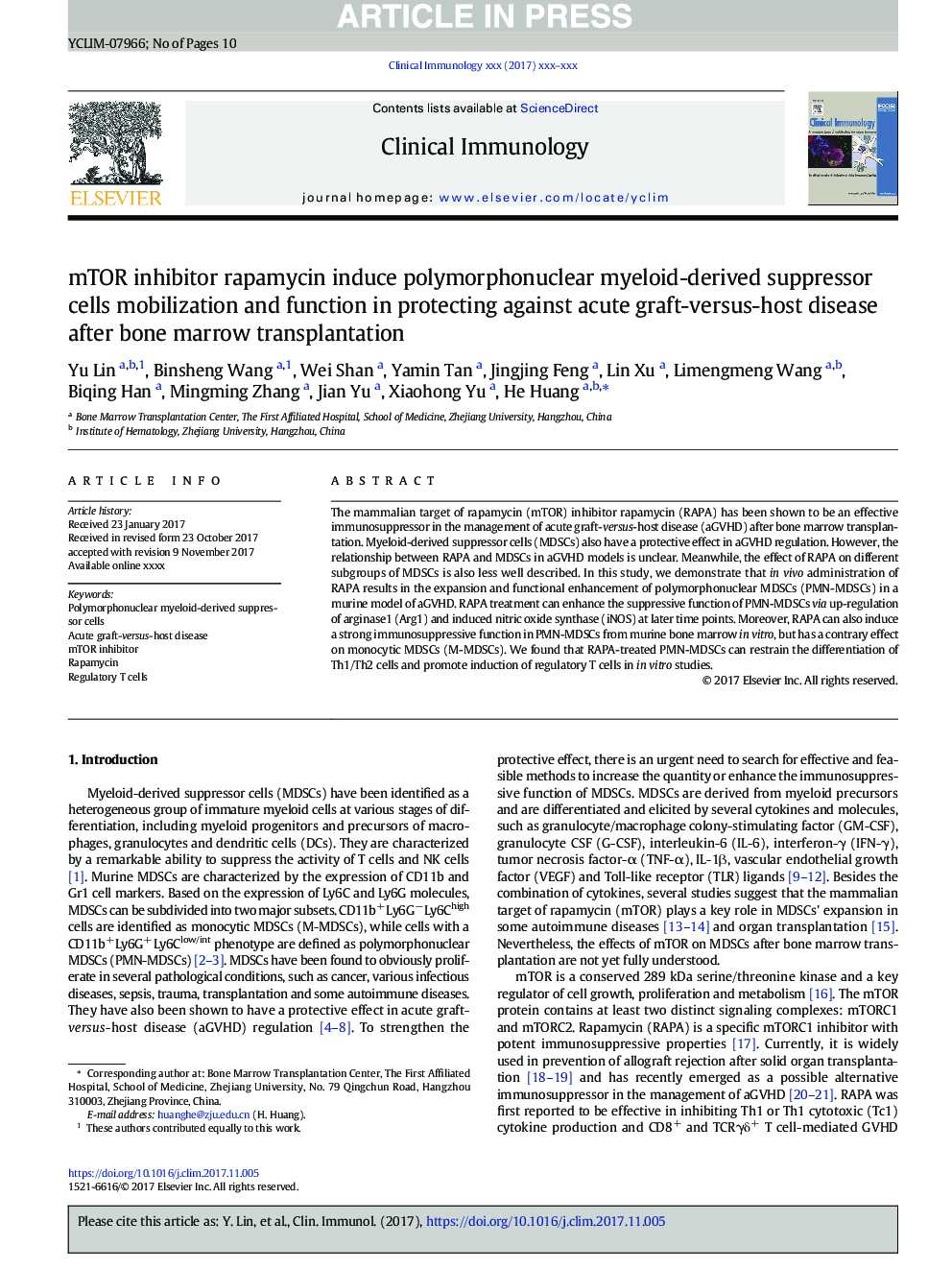| Article ID | Journal | Published Year | Pages | File Type |
|---|---|---|---|---|
| 8721415 | Clinical Immunology | 2018 | 10 Pages |
Abstract
The mammalian target of rapamycin (mTOR) inhibitor rapamycin (RAPA) has been shown to be an effective immunosuppressor in the management of acute graft-versus-host disease (aGVHD) after bone marrow transplantation. Myeloid-derived suppressor cells (MDSCs) also have a protective effect in aGVHD regulation. However, the relationship between RAPA and MDSCs in aGVHD models is unclear. Meanwhile, the effect of RAPA on different subgroups of MDSCs is also less well described. In this study, we demonstrate that in vivo administration of RAPA results in the expansion and functional enhancement of polymorphonuclear MDSCs (PMN-MDSCs) in a murine model of aGVHD. RAPA treatment can enhance the suppressive function of PMN-MDSCs via up-regulation of arginase1 (Arg1) and induced nitric oxide synthase (iNOS) at later time points. Moreover, RAPA can also induce a strong immunosuppressive function in PMN-MDSCs from murine bone marrow in vitro, but has a contrary effect on monocytic MDSCs (M-MDSCs). We found that RAPA-treated PMN-MDSCs can restrain the differentiation of Th1/Th2 cells and promote induction of regulatory T cells in in vitro studies.
Related Topics
Life Sciences
Immunology and Microbiology
Immunology
Authors
Yu Lin, Binsheng Wang, Wei Shan, Yamin Tan, Jingjing Feng, Lin Xu, Limengmeng Wang, Biqing Han, Mingming Zhang, Jian Yu, Xiaohong Yu, He Huang,
